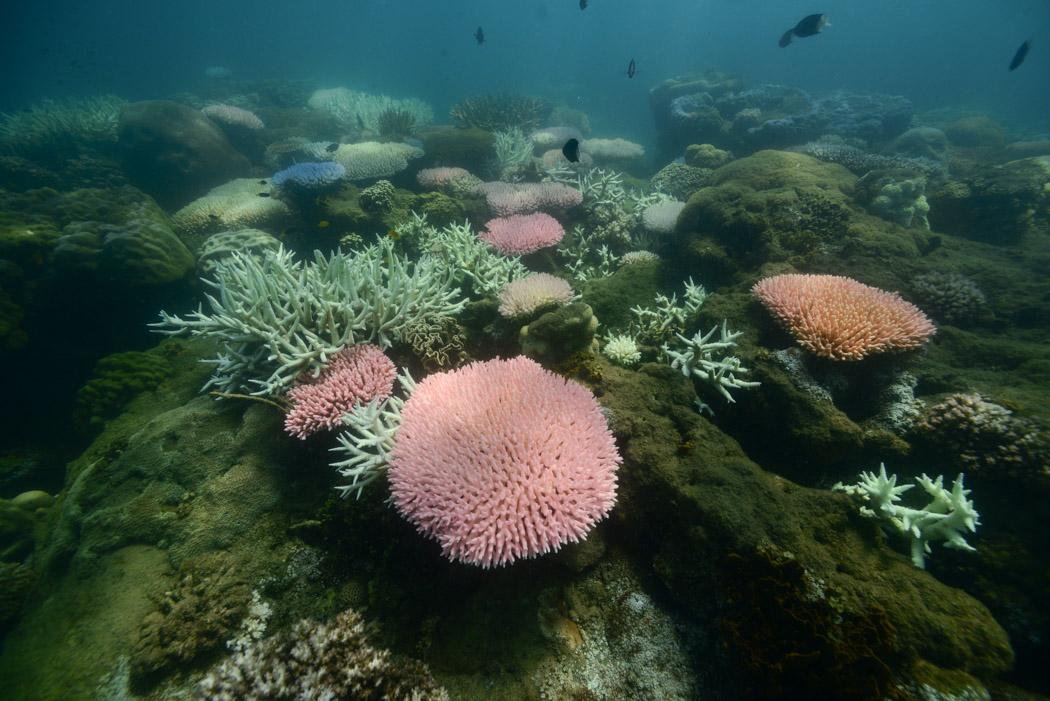AIMS scientists across Australia have found at least two coral species have the genetic diversity to help them adapt to changing environmental conditions.
Dr Jim Underwood’s research team has looked back at the genes of a species, over the past 10-years.
While on the doorstep of the Great Barrier Reef, coral geneticist Dr Line Bay’s team has looked forward 100 years, to see how coral’s genetic variation can cause them to respond to ocean warming.
Dr Bay said the high genetic diversity found by both these studies was good news for corals facing an uncertain future.
“These findings are important measures by which to inform predictions for what coral reefs will look like in the future,” Dr Bay said.
Dr Underwood agrees. “Genetic variation is the raw material for natural selection and the corals we have studied, appear to have a good reservoir of that variation.
Dr Bay and University of Texas’ Professor Mikhail Matz have worked closely to model the evolutionary response of the staghorn coral species Acropora millepora, collected from the Great Barrier Reef before the 2016 and 2017 bleaching events.
“Using genetic samples, oceanographic models and computer simulations we were able to show this staghorn coral species has enough genetic variation to adapt to, and survive rising ocean temperatures for at least another century,” Dr Bay said.
“That’s more than 50 years longer than previous estimates have suggested.”
However, while it is good news, the modelling did not take account declines in reproduction and larval dispersal that can follow disturbances such as mass bleaching and cyclones.
“In a previous study we were able to demonstrate that within this same species of coral, some individuals have genes that make them more heat tolerant than others,” Dr Bay said.
“For a species, having to spend its standing genetic variation to survive the next few years is like digging into your savings to pay your bills.
“This will keep you out of trouble for a short time but it will eventually run out, unless replenished, for example, by larvae from other reefs.”
The new West Australian study into the reef building species Seriatopora hystrix, a type of branching coral, is invaluable for better understanding the secret life of coral after severe disturbances.
“We found that high levels of genetic diversity have been maintained in these corals at Scott Reef in WA’s North West over the last decade, despite experiencing severe bleaching events and cyclones,” Dr Underwood said.
“Until recently, we did not know how genetic diversity actually responds to disturbance associated with climate change.
“Now we can say that, at least for this common “weedy” species, bleaching and cyclones have not been detrimental to that diversity.”
Dr Bay said the new information from these studies was also vital to discussions of potential active interventions that aim to enhance ecological processes.
“We are looking at ways to help reefs resist a rapidly warming environment, and coral genes are a good place to start looking.”
AIMS has conducted research into the genetics of corals for over a decade and has contributed fundamental insights into the ecology and evolution of coral populations.
The papers:
“Genetic signatures through space, time and multiple disturbances in a ubiquitous brooding coral” was published April 17, 2018 in Molecular Ecology.
“Potential and limits for rapid genetic adaptation to warming in a Great Barrier Reef coral” was published April 19, 2018 in PLOS Genetics.



